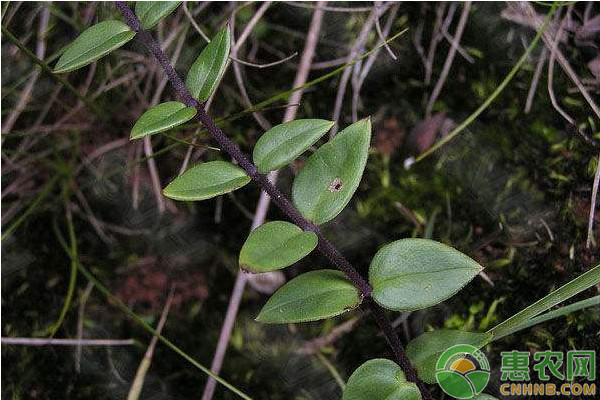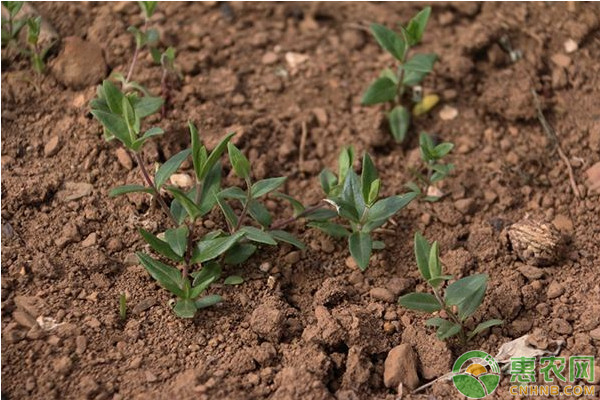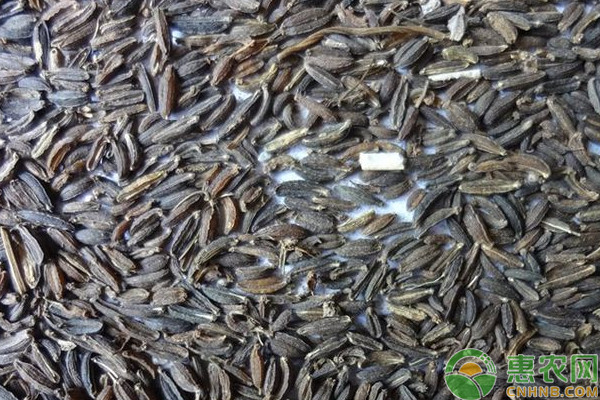How to plant Chinese traditional medicine gold iron lock? Jintie Lock is mainly distributed in Guizhou, Sichuan, Tibet and other regions in China. It is an extremely valuable material. The following small series introduces the cultivation and disease prevention and cultivation techniques of Jintie Lock in Guizhou Province.

1 Land selection and site preparation
The planting plot of Jintie Lock (seed live and transplanted land) should choose the sunny slope, which can meet the requirements of light and temperature of Jintie Lock, and avoid the flood disaster caused by poor drainage. The soil type is suitable for sandy loam developed by limestone. It contains certain gravel and gravel, and it has certain fertility. The key is to ensure the permeability of the soil to facilitate the growth of seedlings and roots.
2 seed treatment and germination
According to the planting method and planting area, take a certain amount of seeds, remove impurities, improve the clarity, and soak the seeds in a solution of 50% carbendazim WP 800 times for 12 hours to remove the cockroaches, and use a damp cloth after filtration. Cover, placed in the environment of about 20 °C, turn 1 or 2 times a day, when about 2% of the seeds are exposed, the seeds should be planted in time.
3 sowing
In the Weining area of ​​Guizhou, due to the late temperature rise and late rain, the sowing time is generally selected from mid-April to early May, and other places can determine the sowing date according to the temperature rise in the spring and the rain sooner or later.
4 transplanting
Gold iron lock transplanting can be carried out in spring and autumn. In the autumn, transplanting is carried out on the ground part and then the seedlings are transplanted. The transplanting is best carried out while transplanting the seedlings; the spring planting is carried out before the root buds sprout, in Weining County, Guizhou Province, generally in March-April. When transplanting, the ridge is 1.2 m wide and the height of the car is determined according to the terrain. The planting distance is 20 cm and the plant spacing is 10 cm. For example, when the transplanting plant has grown seedlings, the seedlings must be set aside when transplanting the soil. seedling. It is also possible to use a bamboo jack to transplant the roots along the bamboo pieces and then compact the surrounding soil. The time is best carried out in the cloudy morning after the rain. At this time, the soil is good. After transplanting, the root water is poured in time. The shade net can be used for shading, which can play the role of moisturizing and nourishing seedlings. After the gradual removal.

5 Field management
Jin Tie's field management focuses on water management and weed management to increase seedling emergence and ensure normal seedling growth.
5.1 Water Management
After seed sowing, pay attention to the observation of soil moisture, especially in nursery fields, and keep the soil moist (maintaining soil moisture at around 60%) until emergence. At the seedling stage, water should be watered at the appropriate time to avoid the seedlings being killed by drought. Although the water management of live and transplanted fields is not as high as that of nursery fields, it is also necessary to pay attention to keeping the soil moist, and timely watering should occur in order to ensure the emergence of seedlings and transplanted seedlings. The gold iron lock is taboo. After the seedlings are transplanted and transplanted, the soil moisture can be about 30%. That is, as long as the plants are not wilting, there is no need to fill the water, and the rainy season should pay attention to drainage and flood prevention to avoid stagnant water.
5.2 weed control
At the seedling stage, the grass is pulled out, and the seedlings are taken out of the soil when the grass is removed, which causes the loss of dead seedlings or the grass directly affects the growth and development of the golden iron lock. In the seedling stage, weeding should also be carried out in a timely manner. Weeding in the whole growing season should be done early, pulled out, and pulled out to ensure the field is clean.
5.3 Fertilization management
Gold iron locks are more resistant to barrenness, and proper fertilization can promote their growth in places where conditions permit. Fertilization should be applied to organic fertilizer. Before planting, the farmer's fertilizer is used as the base fertilizer. After the planting period, the fertilization is not needed. In winter, the weeds are removed after the seedlings are planted. The shell is covered with a layer of decomposed and finely divided farmyard manure (which can be mixed with a small amount of fine soil), which can be used for fertilization. The effect can also keep warm and moisturize to ensure the plants are safe for winter.
5.4 Flowering period management
Studies have shown that the flowering inflorescence is cut off in time, and the yield of the underground roots is significantly higher than that of the uncut flowering inflorescences. Therefore, if the roots are mainly collected, the flowering period should be cut off in time to facilitate the growth of the roots. If you are planting the field, spraying the boron fertilizer on the foliar surface for 1 or 2 times during the flowering period can promote the maturity of the seed.
6 Disease prevention
There are two main diseases of Jintiesuo, namely, blight and root rot, and the prevention and treatment methods are as follows.
6.1 Blight
The seedling stage of the blight is frequent, and the site of the disease is the base of the stem.
Control methods: 1 Seed dressing with carbendazim or diclosanone at 0.2% to 0.3% of the weight of the seed before sowing. 2 Soil treatment: 200 kg of quicklime was used for disinfection before sowing. 3 In the early stage of the disease, the ward is watered with 50% carbendazim or 50% thiophanate-methyl WP 500-600 times, poured once every 5 to 10 days, and continuously poured 2 to 5 times.
6.2 root rot
Root rot is generally caused by high temperature and humidity and poor drainage. The disease is often similar to the symptoms of sputum root and is a fungal disease. It usually occurs in the late March to early April, and enters the peak period in May. Its occurrence is closely related to climatic conditions. The low temperature and high humidity of the seedbed and insufficient light are the main environmental conditions that cause the disease. The soil in the nursery field is sticky, easy to form, and poorly ventilated, which causes the growth and development of the root system to be blocked, and is also prone to disease. In addition, after the roots are damaged by underground pests and nematodes, there are many wounds, which are beneficial to the invasion of pathogenic bacteria. At the time of onset, the diseased area was watered with 800 grams to 1000 times of the enantiomers of Yunkesong or Yunzhi, and even poured 2 to 3 times, each interval of 7 to 10 days.

7 seed harvesting
Because the gold iron lock is infinite inflorescence, the seeds are mature, but the amount of gold iron lock seeds is large. If it is not a special case, it is generally necessary to select a seed that can obtain more seeds for seed harvesting, which can save a lot of manpower. Generally, only a few flowers on the top of the plant are seen in the field, and the seed coat color of most seeds turns yellow-brown, and when the upper seed hand feels hard, the seed is harvested, and relatively more seeds can be obtained. When harvesting, choose to do it at noon on a sunny day, put a piece of plastic cloth between the compartments, and then gently cut the branches of the mature seeds with scissors or a sickle from the opposite side of the compartment, and cut the branches like the "rolling carpet". The cut branches are gradually rolled onto the plastic sheet. It is impossible to cut the stems of the seeds while cutting, so as to prevent the seeds from falling to a large extent. Place the collected shoots in a well-closed plastic bag or container, preferably in a plastic jar, shake the hair while shaking, shake the seeds, and screen out the seeds.
8 harvesting processing
Studies have shown that the gold iron lock with a planting cycle of 3 years has good yield and quality. At this time, the harvest can obtain the best benefit. The harvesting time is generally carried out after the autumn leaves and leaves are wilted after the autumn. The roots are dug out of the stems, leaves, soil and skin, and dried or dried to become a commodity.
The above is the whole content of the cultivation and disease prevention cultivation techniques of Jintie Lock. If you want to know the cultivation techniques of other Chinese herbal medicines, please come to Huinong.com to learn more!
Oolong tea, also known as green tea, semi-fermented tea and fully fermented tea, has more varieties and is a distinctive Chinese tea category among several major tea categories in China. Oolong tea is made after the process of picking, withering, shaking, frying, kneading and roasting.
Main varieties:
Anxi Tieguanyin
Phoenix Shui Xian
Oriental Beauty
Luo Han Shen Xiang
Red Water Oolong
Oolong Red
Red Oolong Tea
Oolong Tea Powder,Oolong Powder,Oolong Milk Tea Powder,Instant Oolong Tea Powder For Drinks
Shaanxi Zhongyi Kangjian Biotechnology Co.,Ltd , https://www.zhongyibiology.com
